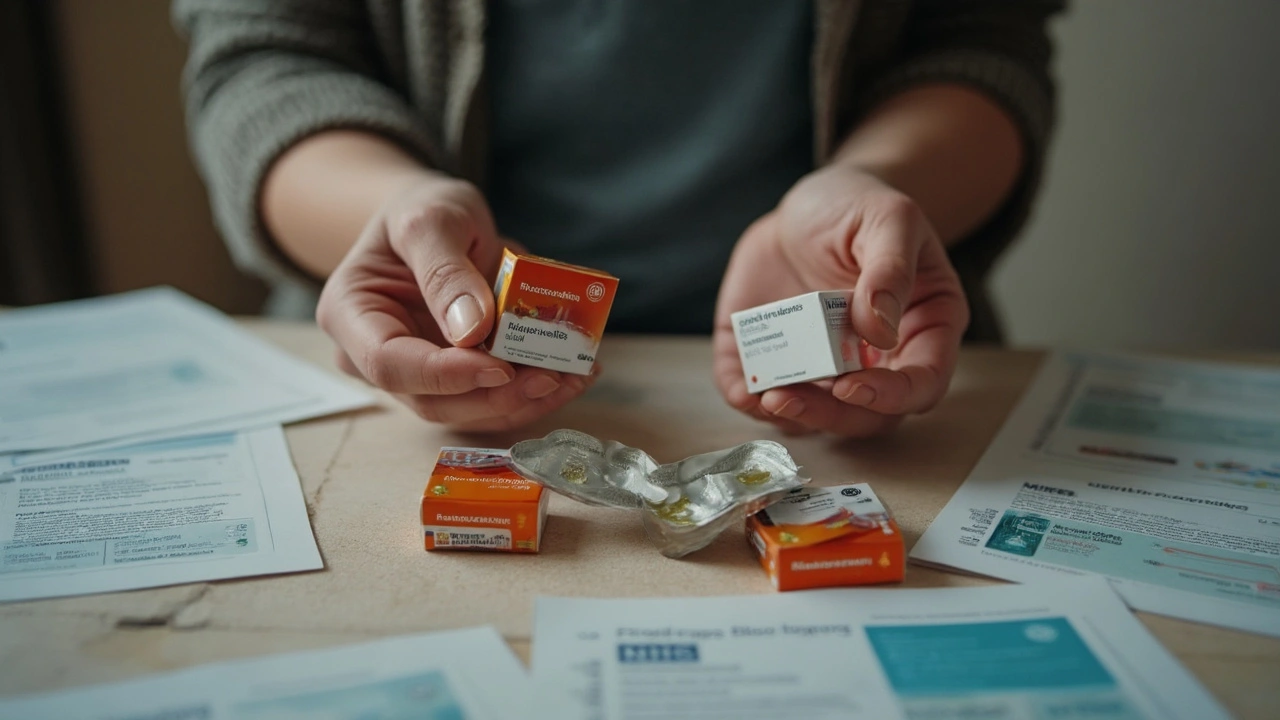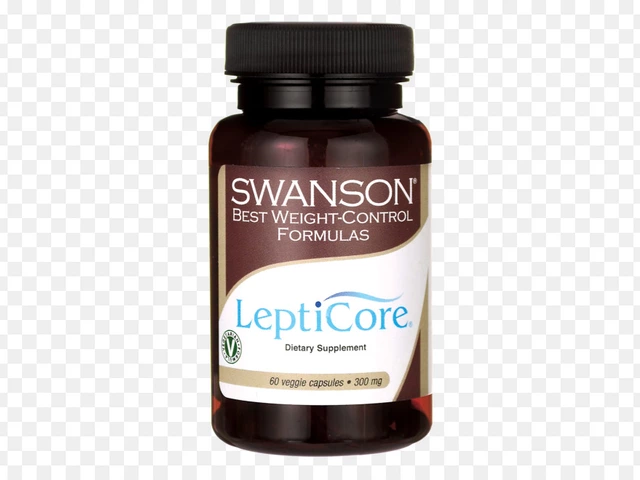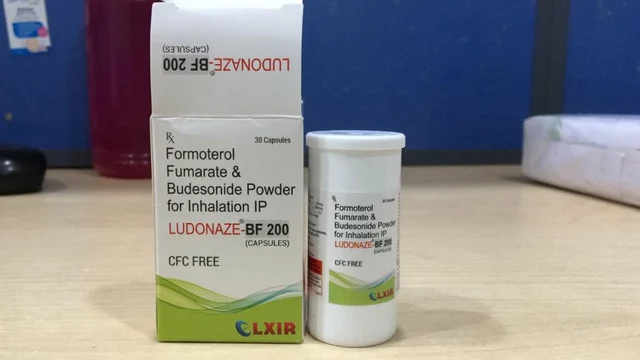Is Rivaroxaban Still Leading Anticoagulant Therapy? Examining the Future of Blood Thinners
Ticking hearts, racing minds, and the constant threat of blood clots lurking in the background—anticoagulant therapy is anything but boring. Rivaroxaban, that little pill you might know as Xarelto, once stole the spotlight from warfarin, promising fewer food restrictions and no constant blood tests. But hang on, the game is changing again. With new drugs popping up and fresh research unfolding every month, it’s fair to wonder: will rivaroxaban keep its crown as a go-to anticoagulant, or is it yesterday’s news?
How Rivaroxaban Changed the Anticoagulant Scene
Before rivaroxaban entered the scene back in 2008, warfarin was king. Warfarin worked, but it turned life into a numbers game—don’t eat too much kale, avoid grapefruit, and get a blood test every week so you don’t bleed uncontrollably or, just as dangerously, throw a clot. Rivaroxaban shook things up by offering fixed dosing and fewer food restrictions. Suddenly, anticoagulation therapy didn’t have to mean living in constant fear of your own salad choices.
As a direct factor Xa inhibitor, rivaroxaban blocks a key player in the body’s clotting process. The simplicity rocked patients’ routines. In a huge 2011 trial called ROCKET AF, researchers found rivaroxaban at least as good as warfarin at preventing strokes in atrial fibrillation. Even better, less brain bleeding—a pretty big win for anyone who reads the fine print about side effects. Doctors loved it too: dosing was easier, and patients didn’t need lab draws every few days. For folks with deep vein thrombosis (DVT) or pulmonary embolism (PE), rivaroxaban often replaced “bridge therapy,” cutting out the need for overlapping injections and pills. Rivaroxaban even scored FDA nods for use in preventing clots after hip or knee surgery.
The numbers don’t lie. A decade ago, sales exploded. By the end of 2022, over 30 million prescriptions for direct oral anticoagulants (DOACs) like rivaroxaban were written in the US every year—outpacing warfarin for the first time. And if you check global stats, rivaroxaban is pulled off the shelf in more than 130 countries. The drug quickly picked up a spot on the World Health Organization’s Model List of Essential Medicines. That’s about as close to VIP status as a pill can get.
So why’s everyone asking if its reign will last? Medicine isn’t a popularity contest—there’s always something new around the corner. Let’s dig into what’s happening now.
The Real Competition: New Blood Thinners and Untapped Technology
Being first is great, but staying first is another story. Over the past few years, the blood thinner world has gotten crowded. Dabigatran, apixaban, edoxaban—these NOACs (novel oral anticoagulants) all target similar steps in the clotting process, but each brings different perks to the table. Apixaban in particular has been the darling of recent studies. In a huge meta-analysis from 2023, apixaban was linked to a lower risk of both gastrointestinal bleeding and overall mortality compared to rivaroxaban. That’s a big deal for older adults, since bleeding risk and frailty don’t exactly mix well.
But it’s not cut and dried. Rivaroxaban’s once-daily dose stays popular, especially for folks who don’t want to juggle morning and evening pills. Apixaban needs to be taken twice daily, which can be a dealbreaker for busy or forgetful patients. There’s also cost. Newer drugs sometimes show better results but at a much higher price, depending on country, insurance, or whether you’re paying out of pocket.
Then you have the wild cards. Gene testing is quietly creeping into mainstream practice. We’re already seeing some research hinting that patients with certain genetic markers might metabolize NOACs differently, making doctors wonder if the future standard will be fully personalized anticoagulation. Imagine a DNA test that picks your perfect drug and dose. Rivaroxaban’s one-size-fits-most simplicity looks nifty now, but will it stand up to tailor-made alternatives?
And don’t forget antidotes. For a long time, warfarin won arguments with doctors because vitamin K could reverse its effects in a pinch. Now, andexanet alfa exists to reverse the effects of some factor Xa inhibitors, including rivaroxaban and apixaban, though it isn’t available everywhere. Cost and access to these reversal agents can weigh heavily on treatment decisions, especially in rural areas and hospital systems on tight budgets.
The table below sums up how the big names in anticoagulation compare on some meaningful points:
| Drug | Dosing | Lab Monitoring | Main Reversal Agent | Major Bleeding Risk | Year Approved (US) |
|---|---|---|---|---|---|
| Rivaroxaban | Once-daily | Not routine | Andexanet alfa | Moderate | 2011 |
| Apixaban | Twice-daily | Not routine | Andexanet alfa | Lower | 2012 |
| Dabigatran | Twice-daily | Not routine | Idarucizumab | Similar to rivaroxaban | 2010 |
| Edoxaban | Once-daily | Not routine | Not specific | Similar | 2015 |
| Warfarin | Varies | Frequent | Vitamin K | High (if poorly managed) | 1954 |
If it sounds a bit like split hairs, that’s because in a lot of cases these drugs perform pretty similarly on major goals—preventing clot-related strokes, and keeping bleeding rates within reason. But, for certain groups (like kidney patients or folks with stomach ulcers), even small differences matter a lot.

The Pros and Cons: Not Just a Simple Pill
Let’s cut the hype and get real about why rivaroxaban is loved—and why it sometimes gets shade. The biggest pro is convenience. Swallow a pill once a day, forget about blood draws, and live life with fewer medical interruptions. That’s huge. But convenience isn’t the only thing that counts.
Experts point out that rivaroxaban is eliminated mainly by the liver and the kidneys. So, for someone with serious liver or kidney trouble, the risk for bleeding jumps up. In those cases, doctors often pick apixaban or even stick with warfarin, especially if they can carefully monitor dosing with blood tests.
Another curveball is drug interactions. Rivaroxaban doesn’t play well with certain antifungal meds, HIV drugs, or even grapefruit juice—something not everyone realizes. In 2023, a study linked increased hospital visits for bleeding to patients mixing rivaroxaban with specific common antibiotics like clarithromycin.
To help keep things straight, here’s a simple way to reduce risk if you’re on rivaroxaban (or any blood thinner):
- Make a list of all your meds and supplements. Double-check interactions with your doctor or pharmacist—not just at the start, but whenever anything changes.
- Use a pill box or phone reminders so you don’t miss doses.
- If you have any procedures or get a new diagnosis (like liver or kidney disease), check if your dose or medication should change.
- Watch out for warning signs: new or unexpected bleeding, blood in urine or stool, or severe headaches need a call to the doctor, not a wait-and-see.
- Always ask about reversal options at your local hospital; not every facility stocks these lifesaving meds.
For most folks, rivaroxaban is a solid choice, but it’s not a fit-all solution. Age, other illnesses, genetic quirks, insurance, and out-of-pocket costs all steer the decision. Many clinics now use risk assessment tools like the CHA2DS2-VASc score for stroke prevention and HAS-BLED score for bleeding risk. If you’re ever stuck weighing options, bring these up—don’t just take “it’s protocol” as your answer.
Where the Research is Heading: Personalized Anticoagulation
We’re stepping into a future where the “average patient” doesn’t really exist. Medicine is moving from one-size-fits-all to personal blueprints—and anticoagulation is no exception. There are over a dozen new oral anticoagulants in preclinical or early clinical trials as of this year. Some target the same factor X pathway as rivaroxaban, while others take creative detours, like hitting factor XI, which early evidence suggests could cut clot risk without raising bleeding nearly as much.
Artificial intelligence is even making waves by predicting which patients will benefit most from certain drugs, using huge datasets from electronic health records. Picture an algorithm suggesting not just the drug but also the ideal dose and monitoring plan based on your kidney function, liver status, age, and other medications. Already, large hospital systems in the US and Europe are piloting these decision tools for patients with atrial fibrillation and high risk of clots.
The difference from five years ago? Patients themselves are more involved. Wearables now track heart rhythm and flag atrial fibrillation episodes, so the decision to start (or stop) blood thinners like rivaroxaban happens faster, often before a major event. Pharmacies also offer test-and-treat programs, simplifying access for busy adults.
And let’s not ignore cost. As more anticoagulants go generic (rivaroxaban is expected to hit generic status in the US around 2026), insurance landscapes will shift. Lower drug costs may expand access but also make doctors more likely to reach for older, trusted meds like rivaroxaban—especially if the price is right versus the “fancy” newcomers.
One area worth watching is the development of better reversal agents. The story isn’t just about preventing clots; it’s also about safely stopping bleeding if it happens. Clinical trials for universal antidotes—capable of reversing multiple NOACs at once—could shake up clinical guidelines in the next few years.
In this blur of innovation, the biggest question isn’t which blood thinner is technically “best” on a chart, but which works best for each unique body sitting in front of a doctor. That’s where rivaroxaban could either hold tight or see its market share shrink as new designs and personalized approaches take over.

Rivaroxaban’s Spot in the Real World: Practical Tips and Future Scenarios
If you ask ten doctors about their first-line anticoagulant, you’ll hear ten different answers. The COVID-19 pandemic made things even trickier: cases of blood clots shot up, but so did concerns about bleeding in critically ill patients. Rivaroxaban made its way into some COVID-19 protocols, especially for post-discharge patients at risk of clots, because of its oral dosing and predictable effect—no injections, no lab monitoring hassle.
But there’s a flip side. Some insurance plans now require patients to “fail” warfarin first—as in, have a problem with it—before covering NOACs like rivaroxaban. This means a lot of folks bounce between drugs, sometimes without clear reasons beyond paperwork. Being proactive—asking your doctor about specific reasons for each switch, and making sure you’re not missing key health changes in the shuffle—can save serious headaches down the line.
The everyday experience matters, too. A real-life report out of a large hospital network in the UK found that nearly 1 in 5 patients on rivaroxaban missed doses after six months, usually because of cost, confusion about timing, or side effects. Here’s what helps real patients stay on track:
- Make your medication part of another daily habit—like brushing your teeth or breakfast.
- Set calendar alerts or use smartphone apps designed for medication reminders.
- Ask your doctor to write clear instructions, especially if doses change after surgery or a hospital stay.
- If your insurance changes, check whether your usual drug is still covered—or see if a generic is an option before refilling.
- Tell friends or family about your medication, so someone else can notice if you’re acting strange or feeling off (a common sign of serious bleeding or clotting).
Looking forward, what will keep rivaroxaban a top contender? Generic formulas will boost its use in countries where price keeps many people on warfarin. New data might expand its approved uses—think uncommon clotting disorders, or as add-on protection in high-risk cancer patients. But the core value—the balance of risk and ease—will decide whether it stays the go-to drug or cedes the stage to newer, more tailored therapies.
For now, anticoagulation therapy is a moving target, and rivaroxaban is still one of the easiest darts to throw. Whether it lands dead-center or just in the rings will depend on the next wave of science—and the everyday stories of the millions still counting on it to keep their blood flowing safely.






8 Comments
sara fanisha
May 17 2025I've been on rivaroxaban for a couple of years and honestly, the once‑daily routine is a lifesaver. It lets me forget about the endless blood draws that used to dominate my schedule. The reduced dietary restrictions also mean I can finally enjoy a decent brunch without scanning the menu for hidden warfarin traps. Sure, there are bleeding risks, but my doctor keeps an eye on my kidney function and we've never had a major scare. All in all, it's been a smooth ride and I feel pretty optimistic about its staying power.
Tristram Torres
May 17 2025While the convenience is real, you have to admit the occasional gum bleed can be nerve‑wracking. The cost can also creep up, especially if your insurance decides to play games. And if you ever need an urgent reversal, not every hospital has andexanet alfa on standby. So the picture isn’t all sunshine, even if you love the simplicity.
Jinny Shin
May 17 2025Picture this: a silver capsule gliding down the throat, promising to tame the chaos of clotting like a maestro conducting a symphony of blood flow. The moment rivaroxaban entered the market, it felt like the pharmaceutical world had finally unearthed the Holy Grail of anticoagulation, banishing the tyrannical reign of warfarin to a dusty corner of medical history. Yet, as the weeks turned into months, the chorus of clinicians began to sing a more nuanced aria, highlighting not just the ease, but the shadows that linger behind the bright veneer. Critics whispered about the insidious rise in gastrointestinal bleeds, especially among the elderly who already juggle a precarious balance of comorbidities. Researchers in tertiary centers dissected trial data with a surgeon's precision, exposing subtle statistical cliffs that could topple the most confident prescriber. Meanwhile, patients on the front lines reported a strange paradox: the freedom of a single daily pill was sometimes eclipsed by the anxiety of missing a dose, a fear that could manifest as a sudden, panicked trip to the emergency room. The pharmaceutical giants, sensing the tremors, began to fast‑track competing agents, each brandishing claims of lower bleeding profiles and smoother pharmacokinetics. Apixaban, with its twice‑daily regimen, strutted onto the stage, daring rivaroxaban to defend its throne not just on convenience but on raw efficacy. The medical press, ever hungry for drama, splashed glossy headlines proclaiming the “War of the Blood Thinners,” turning what should have been a quiet evolution into a spectacle fit for prime‑time. In conference halls, key opinion leaders debated with the fervor of ancient philosophers, each citation wielded like a sword, each meta‑analysis presented as an oracle's prophecy. Yet, amidst the clamor, a quiet cohort of clinicians championed personalized medicine, arguing that genetics, renal function, and even patient lifestyle should dictate the ultimate choice rather than a one‑size‑fits‑all mantra. The emergence of DNA‑guided dosing algorithms hinted at a future where rivaroxaban might be prescribed with laser‑like precision, its risks mitigated by a simple cheek swab. Still, the drug's looming generic status in 2026 adds another layer of intrigue, promising to democratize access while potentially reigniting debates over brand loyalty versus cost savings. Ultimately, the narrative of rivaroxaban is less about a solitary hero and more about an evolving cast of characters, each playing a part in the grand theater of thrombo‑prevention. Whether the spotlight will dim or blaze brighter remains an open script, awaiting the next act of scientific discovery and patient experience.
deepak tanwar
May 17 2025It is rather presumptuous to proclaim rivaroxaban as the unrivaled champion of anticoagulation when data continues to reveal comparable efficacy among its peers. The once‑daily dosing convenience is, at best, a marginal advantage that does not offset the nuanced pharmacodynamic differences observed in renal‑impaired cohorts. Moreover, the reliance on a costly reversal agent such as andexanet alfa raises questions about the true sustainability of its widespread adoption. One must also consider the emerging evidence favouring factor XI inhibitors, which may eventually eclipse the current factor Xa paradigm entirely. Hence, framing rivaroxaban as the definitive future appears optimistic to a fault.
Abhishek Kumar
May 17 2025Rivaroxaban is just another pill, nothing special.
hema khatri
May 17 2025Our doctors should stick with rivaroxaban because it’s made by companies that care about American patients!!! The drug’s once‑daily schedule fits our busy lives perfectly and we don’t need to waste time with endless lab work. Cost is also a big deal-generic versions coming soon will make it affordable for everyone. The newer European drugs may sound fancy but they’re not always accessible here. Let’s keep supporting a therapy that works for us.
Jennell Vandermolen
May 17 2025It’s great to see how many people have found a routine that works for them, especially with a medication as straightforward as rivaroxaban. If you’re ever unsure about interactions, a quick chat with your pharmacist can clear up a lot of confusion. Keeping a simple reminder-like a phone alarm or pairing the dose with a daily habit-helps maintain consistency and reduces missed doses. Also, don’t forget to review your insurance coverage regularly; sometimes a generic alternative pops up and can save you a bundle. Overall, staying proactive and informed will make your anticoagulation journey smoother and safer.
Mike Peuerböck
May 17 2025Embracing rivaroxaban can feel like stepping onto a vibrant runway of therapeutic simplicity, where the cadence of a single daily dose sets the rhythm for a life unburdened by constant monitoring. In a world brimming with complexities, this agent offers a luminous beacon of predictability, letting patients focus on their passions rather than pharmacology. The clinical landscape, adorned with robust trial data, underscores its efficacy while highlighting a tolerable safety profile that rivals legacy drugs. As healthcare systems evolve, the impending arrival of generic formulations promises to democratize access, turning an elite option into a staple for many. By marrying convenience with proven outcomes, rivaroxaban stands poised to empower countless individuals on their journey toward optimal cardiovascular health.